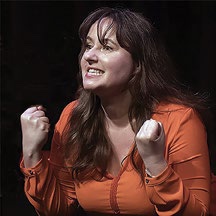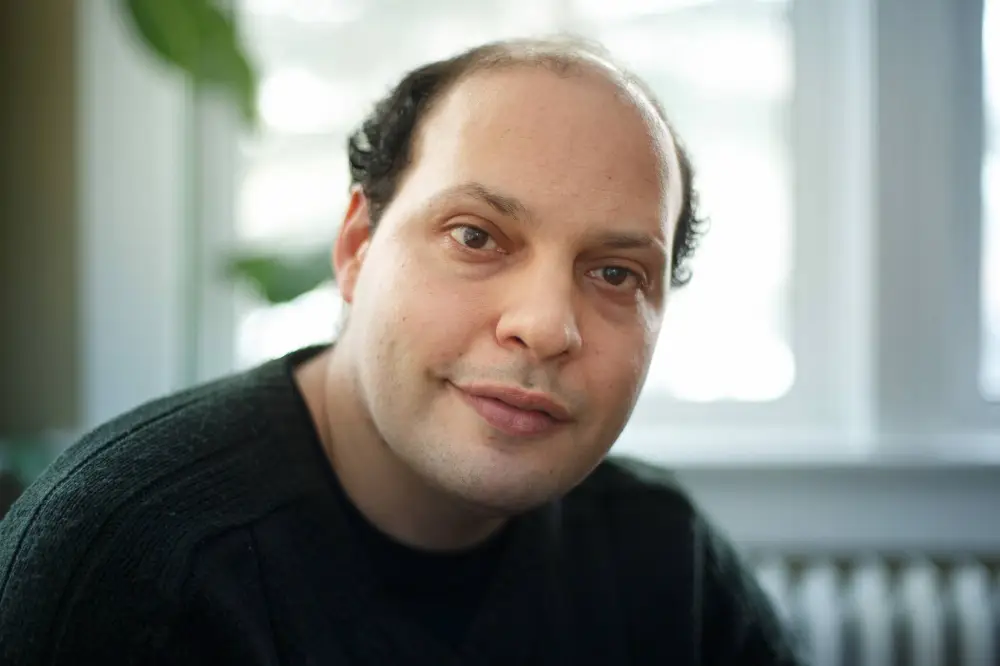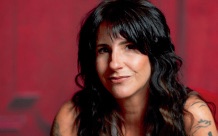Local News
City of Kenora says it is not interested in subdividing Town Island; will sell to only one purchaser

By BERNIE BELLAN
A story that we have been following closely has taken an interesting twist. In the case of the looming sale of that portion of Town Island which is not already owned by BB Camp, the City of Kenora has clarified that if the rest of Town Island is sold, it will not be sold to more than one purchaser.
In a news story reported in Kenora Online on December 20, it was reported that City of Kenora Manager of Development Services Adam Smith said that, if the island were to be sold, it “will be sold as a whole (emphasis mine), with the exception of the B’nai Brith Camp property which won’t be affected.
“ ‘I think there might be some misinformation in relation to us proceeding with subdividing the island. We will be selling it in its entirety, at least the part of the island that we own. If a purchaser did come in and wanted to divide the island, there is a process they would have to follow through the ministry of municipal affairs and housing,”
“ ‘I think people may be perceiving that once it is acquired, or purchased through say a private party, right away they would immediately be able to commence with development. There is further due diligence, especially through en environmental perspective that would have to be completed,’ he said.”
However, in the original Expressions of Interest/Request for Proposals that the City of Kenora posted in September, the wording of the EOI/RFP said Kenora would… sell the lands to an interested party who is prepared to immediately undertake an appropriate development (emphasis ours) that complies with all relevant regulations and procedures.”
We asked Adam Smith to clarify the apparent contradiction between indicating that a purchaser would be expected to undertake “an immediate development” and the story that appeared in Kenora Online on December 20.
Smith responded: “That has been a standard line in our EOI ads and has since been removed. It is more reflective of properties within town for which we would like to see a project move ahead right away.”
As well, the Canadian Jewish News has also reported on the story. In a December 30 story written by Paul Lungen, it is reported that Kenora Mayor Dan Reynard said that “there’s nothing in the city’s request for proposal that requires the island be turned over to developers. The city is open to receiving bids from stakeholders who wish to retain the island in its undeveloped state.“
The CJN story also noted that following an October meeting with the “Friends of Town Island”, the City of Kenora had “agreed to extend the deadline for bids until the end of January, to give the stakeholders more time to look into a bid.” (In our story in the December 25 issue, we merely noted that the deadline for receipt of proposals was January. We were not aware that the deadline was the “end of January”.)
In an email dated December 31, however, City of Kenora Manager of Development Services Adam Smith would not confirm whether any proposals for the purchase of Town Island had been received yet.
I did ask Smith though whether the City of Kenora had received an offer from BB Camp to purchase the rest of Town Island in 2014, which is when the camp purchased 30 acres of the island. He responded that he did “not have any knowledge of offers to purchase the rest of the island in 2014.”
Yet, in a CBC story about the proposed sale of Town Island it was reported that, according to Aaron London, “BB Camp has inquired about buying the rest of the island in the past, but camp officials were told it would be transferred to a public trust.”
In a subsequent email to me London did confirm that there had been discussions involving a member of the City of Kenora’s administration back in 2014 about BB Camp purchasing Town Island in its entirety.
As we also noted in the story that we published in our December 25 issue, moreover, according to a 2014 story in Kenora Online, a spokesperson for the City Council of Kenora had said that “they (the city council) are committed to preserving Town Island in its current natural state and protecting the fishery and natural habitats on and around the island.”
However, in the intervening years between 2014 – when the sale of Town Island was averted and BB Camp was able to purchase 30 acres of Town Island (leaving 156 acres still owned by the City of Kenora) – and the present day, the City of Kenora has found itself subject to much increased social and financial pressures due to a variety of factors.
In a report issued by the Ontario Human Rights Commission in September 2019 which was titled “Report and recommendations on homelessness in Kenora”, it was noted, among other findings, that “Kenora is facing an immediate homelessness and drug addiction crisis which has a disproportionate impact on First Nations people who live in the city. (It’s a crisis where loss of life is foreseeable). The immediate crisis is related to:
o the forced displacement of vulnerable people, including people with addictions and mental health disabilities, who had been living in a substandard low-rise apartment building (Lila’s Place), coupled with fires that demolished two other low-income apartments in recent years
o the recent arrival of methamphetamine (“crystal meth”) from Winnipeg and associated health and safety-related issues
o the closure of other emergency shelter services at the Fellowship Centre due to lack of sustainable funding.
In the CJN story, Kenora Mayor Dan Reynard noted his frustration with the Province of Ontario and the province’s unwillingness to become involved in helping to provide a solution to the Town Island situation. According to the CJN story, Mayor Reynard said “talks with the province went on for years, ‘but it just seemed to get bogged down in the system.’ In the meantime, ‘we’ve got this asset and a big infrastructure deficit within the community,’ he said.”
The 2019 budget passed by the City of Kenora included a major increase in expenditures for policing. As Mayor Reynard explained in a story reported in Kenora Online in March 2019 “$650,000 of the $900,000 in tax increases approved weren’t within council’s control, including more than $400,000 related to an increase in policing costs.
“The increase is connected with a rise in calls for service, the mayor said. The OPP have said the increase in calls for service is related to the introduction of crystal meth, and there has been a related increase in petty thefts – including break-ins – officers say is associated with the drug.”
Thus, while many readers are no doubt concerned that Town Island’s future may be in jeopardy, it is important to be aware of the many factors that have led to this current situation, especially the much increased difficulties in which the City of Kenora finds itself.
Local News
New Israeli restaurant opens in River Heights

By BERNIE BELLAN (July 6, 2025) It’s been a long time since our community has been able to welcome the opening of a restaurant that specializes in Israeli food.
That void is now going to be filled with the opening of The Green Falafel, at 1833 Grant (corner of Centennial – next to the Subway).

The restaurant is the fulfillment of a dream long held by the husband and wife team of Ariel and Eden Maudi, who have been living in Winnipeg the past 11 years.
Ariel, who was born in Israel and grew up in Beer Sheva, says that he worked in telecommunications in Ramat Gan for several years. He adds though that he had always dreamed of owning his own falafel stand in Israel, but life was difficult there and he decided to come to Canada as a tourist to see whether there were any opportunities here for him, Eden and their two young children.
Eden, who was born in Russia and moved to Israel with her family in 1996, stayed behind with the two kids, who were both pre-schoolers, while Ariel tested the waters in Canada first.
Ariel says he came to Canada as a tourist in 2013. His first stop was in Toronto, where he acquired his 1st class driver’s license. At the end of 2013 he moved to Winnipeg where he began working as a truck driver. Soon he found himself employed as a successful sales person at Vickar Nissan where, he says, he once achieved the status as the top car sales person in Canada. After working at Vickar Nissan for a number of years, Ariel began working as an installer for Bell MTS.
Meanwhile, Eden began working at a Walmart, later at the Costco on Regent.
But, when the opportunity to move into a space that had been previously occupied by another restaurant, but which had closed, became available, Ariel and Eden decided to open their own Israeli restaurant in an area that hadn’t seen Israeli food served since the controversial closure of Bermax Café in 2019.
The Maudis say that they will be serving a variety of Israeli dishes – all vegetarian, and that they will be fully kosher.
The “green” in Green Falafel, by the way, Ariel Maudi explains, comes from the cilantro and parsley that are added to the chickpeas. In addition, their pitas will be coming from Israel and will be baked fresh daily.
The Green Falafel will be open from 10-8 daily. Delivery will be available through Uber Eats and DoorDash.
Call 204-557-7837 for information.
Local News
Previews of shows with Jewish performers at this year’s Fringe Festival July 16-27

For show dates and venues go to winnipegfringe.com
By BERNIE BELLAN As has been our custom for many years now we try to find shows that have either Jewish performers or themes that would have particular appeal for Jewish audiences. Many of the Jewish performers at this year’s festival have been here before, but several are new. In no particular order here are blurbs about the shows we’ve found that fit the criteria I’ve just described. (By they way, if we’ve omitted a show that should be included in our list there’s plenty of time to get added to this post. Just drop me a line at jewishp@mymts.net.)

You’ve Been Served: A One-Woman Show About Divorce, Cults, and Coming of Age at Midlife
Noemi Zeigler
You are hereby summoned… to laugh, cry, and maybe belt out a Streisand number in solidarity. You’ve Been Served is a raw and riotous solo comedy by writer-performer Noemi Zeigler. It all begins when Noemi is served divorce papers on top of a garbage bin lid while taking out the trash—an undignified start to a full-blown midlife unraveling.
At 50, still clinging to her dream of becoming a singer, she falls under the spell of a music producer slash self-help guru, joins a spiritual cult, and, instead of landing a record deal, she lands in jail. Behind bars, with help from her long-buried inner child, she begins to reclaim her voice and her power. Turns out, dreams really do come true—just not the way she expected.
The show features vividly drawn characters—including a manipulative cult leader, a toxic ex-husband, and a jail guard named Roach who shares Noemi’s obsession with the fashion of Charlie’s Angels (the ‘70s TV version, of course.)
With salsa dancing, twerking, and a belting rendition of Don’t Rain on My Parade, Zeigler dives into abandonment, reinvention, and self-rescue. As she confronts perimenopause, she discovers it’s not the end—it’s the new puberty. The show touches on grief, sexuality, and spiritual confusion, but Noemi’s childlike optimism asks: What if your breakdown is actually your breakthrough?

You’re good for nothing… I’ll milk the cow myself
Written & Performed by Natacha Ruck
France, 1981: The first socialist president is about to be elected and young Natacha is ready to implement her own political platform. But first, she has to take down the schoolyard bully,emasculate the rules of French grammar and make off with grandmother’s chocolate.
If you think you know the limits of Jewish mothers, evil grandmothers and transcontinental lovers, meet Natacha Ruck’s family. This true tale of three generations of women, facing three world wars, is equal parts hilarious, shocking and zany.

A One Human Being, Potentially Comedic Performance of Beauty and the Beast NEW WORK!
Written & Performed by Alli Perlov
Be our guest! Local high school drama teacher Alli Perlov is back for a tale as old as time. Can she sing? Not really. Can she act? That’s debatable. Will you laugh? Oh… probably.
Perlov plays dozens of characters, some human, some animal, and many objects, in a comedic exploration of Beauty and the Beast.
In an homage to this brilliant musical adventure, through witty commentary and unstoppable energy, Perlov aims to entertain an audience that isn’t forced to be there like her students.

Hockey Sticks and Beaver Pie
Written & Performed by Melanie Gall
Take a trip around Manitoba. From the 30,000 ft. St. Adolphe snow maze to the Narcisse snake dens! After all, where else holds both the title of Slurpee Capital of the World and the Guinness Record for the most people simultaneously howling like wolves?
Deanna Durbin, Terry Jacks and Burton Cummings are among the many homegrown stars, and Hockey Sticks features their music along with original songs and the stories that make this province unique.
Starring Melanie Gall from past shows Piaf & Brel, Ingenue and Toast to Prohibition

Nerohilarity Exposed
Produced by Adam Schwartz
We all sometimes feel exposed, whether that’s as a fraud or a pretender.
The performers of the award-winning Neurohilarity show, Danielle Kayahara (Laugh Out Loud CBC), Carole Cunningham (Yuk Yuks, The Debaters), Adam Schwartz (Winnipeg Fringe) and Rollin Penner (Yuk Yuks, CBC, Rumors, Winnipeg Comedy Festival), apply a comedic spin to the experiences that make us feel insecure, stripping away the emotional weight with nittygritty jokes and stories that will have you laughing uproariously.
Brilliantly awkward.

A Lesbian in the Kitchen
Willow Rosenberg
Professional lesbian Willow Rosenberg takes you on a journey through the centuries, superstitions and tablespoons of her lifelong passion for baking in this spiritual successor to 2024’s Jenny Award-nominated A Lesbian in a Bear Store.
Whether you have a favourite spatula, bake once or twice a year, or live in constant fear of being told to “just fold it in”, this one-woman show about family, joy, tradition (but make it gay),
Judaism, comfort, home (but make it gayer*), love, chemistry and magic is for you!
*Who’re we kidding, it’s all gay!

Eleanor’s Story: An American Girl in Hitler’s Germany
Written & Performed by Ingrid Garner
(Ed. note: Although Ingrid Garner isn’t Jewish, we thought the theme of this show might have a special appeal for Jewish readers.)
Based on Eleanor Ramrath Garner’s best-selling memoir, this 16x internationally award-winning adaptation – performed by her granddaughter, Ingrid Garner – details Eleanor’s youth as an American caught in Second World War Berlin.
Punctuated with humour and accompanied by cinematic sound and video, Garner embodies her ancestors in this coming-of-age odyssey, delivering an account of war that is more relevant than ever.

Reviewing The Free Press 2
Benji Rothman
The Winnipeg Free Press has run amok, reviewing each and every Fringe show over the past two decades without consequence or recourse. Now, it’s their turn… again.
In this refurbished work that debuted at last year’s Winnipeg Fringe, Benji Rothman once again takes the Winnipeg Free Press to task. In this (mostly) new, (hopefully) hilarious 45-minute show, Rothman dives deep into their past and exposes their faulty journalism, imbalanced reporting and, of course, embarrassing typos.
Local News
Jewish performers at this year’s Winnipeg Folk Festival July 10-13

The Black Sea Station
Long ago, there were the klezmorim, itinerant musicians who roamed the back streets of Eastern Europe, playing at parties for meals and a few coins. The sound they honed then was a visceral exploration of life’s joy, and its loss; they could whip audiences into a frenzy of dancing, or bring them to tears with the mournful wail of a clarinet. Today, Winnipeg’s own The Black Sea Station is carrying on this tradition. Featuring Daniel Koulack (bass), Victor Schultz (violin) and Myron Schultz (clarinet) — cofounders of seminal local klezmer act Finjan — along with Moldovan accordion wizard Nikolai Prisacar and multi-instrumentalist Ben Mink, the quintet transports listeners to a time and place long past. Through a mix of original songs rooted in history, and traditional tunes spun up with modern zest, they whirl through the exuberant klezmer sounds of their Eastern European heritage, tending the old ways with deep love and respect.
The Black Sea Station will be performing Sunday, July 13, at 1:00 pm in Snowberry Field.

Romi Mayes
Romi Mayes has taken some hard knocks in her life, but she’s never faded away. For more than 25 years, Manitoba’s first lady of blues-rock has been a lynchpin of the Canadian roots scene. She earned that position the old-fashioned way, through her gritty, passionately emotive music. With her sizzling guitars and full-throated rasp, the Juno-nominated performer howls and purrs through razor-edged lyrics, rocking out wherever she can find a stage. She’s long been one of the hardest-working musicians on the circuit, keeping a busy slate of gigs and mentoring up-and-coming artists to get a foothold on the trails she blazed. Now, after a nine-year hiatus from the studio, Mayes has put her scintillating sound back on record with her long-awaited seventh album, Small Victories — a return that leaves no doubt, no matter the ups and downs, Mayes is here to stay.
Romi will be performing Friday, July 11, at 1:00 pm in Burr Oak.

Leonard Podolak (with Matt Gordon)
Ireland’s Matt Gordon is a fiddler and singer, whose fleet-footed clogging and thigh-slapping hambone has taken stages by storm since the 1980s. Leonard Podolak is a virtuosic master of the clawhammer banjo, who for decades has whipped up some of Manitoba’s wildest roots parties with his band, The Duhks. Put those talents together, and they can promise you this much: we’re all gonna have a real good time. Longtime friends and musical collaborators, Gordon and Podolak deliver an exhilarating trip through old-time Appalachian music. Their performances seamlessly blend intricate instrumental lines with heartfelt singing and dazzling dance. They’ve teamed up on a few records over the years, including 2020’s bigband extravaganza Power Wagon: Live At Shanley’s. But the best way to experience this duo’s toe-tapping, hand-clapping chemistry is to see it live.
Podolak and Gordon will be performing A concert with a side of clogging Sunday, July 13, at 3:00 pm in Folk School.
